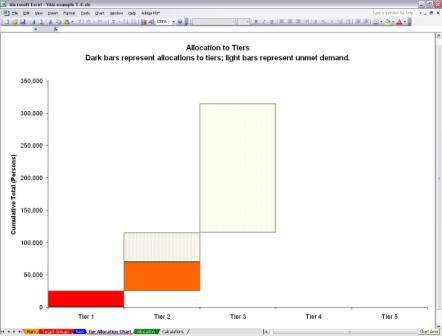



The Vaccine Allocation Model is intended to help public health officials determine how many persons in different target groups can receive treatment. The Vaccine Allocation Model can be used either in the advance planning stages of a vaccination campaign or for support during a vaccination campaign.
This software is provided free of charge for use by public health emergency preparedness planners. All of the software is copyrighted by the University of Maryland.
Registration: Please send an email to jwh2@umd.edu to tell us that you have downloaded the software. Also, please let us know how you found out about the software. We will update you when revisions are available. We will not send you junk email.
Download: You can use the following links to download the user's guide and the model. Right-click and then click on "Save Target as..." (or "Save Link as...") to save the PDF and Excel files on your computer.
Vaccine Allocation Model - Version 3.0. This version allows one to set the number of doses per person for each target group. It also removes the pandemic severity scenarios that were present in the previous versions.
The following older versions of the Vaccine Allocation Model are still available:
Vaccine Allocation Model - Version 1.4
Version 1.4 uses the target groups from the Guidance on Allocating and Targeting Pandemic Influenza Vaccine.
Vaccine Allocation Model - Version 2.1
Version 2.1 uses the target groups from the recommendations for use of vaccine against novel influenza A (H1N1). These recommendations were made by the Centers for Disease Control and Prevention.s Advisory Committee on Immunization Practices (ACIP) on July 29, 2009. See http://www.cdc.gov/media/pressrel/2009/r090729b.htm for more information. This version also allows the user to change the number of doses per person.
Copyright notice: Copyright 2009 University of Maryland and Montgomery County APC. All rights reserved.
Disclaimer: Cooperative Agreement Number U50/CCU302718 from the CDC to NACCHO supported this publication. Its contents are solely the responsibility of the University of Maryland and the Advanced Practice Center for Public Health Emergency Preparedness and Response of Montgomery County, Maryland, and do not necessarily represent the official views of CDC or NACCHO.

Return to Project home page.
Last updated by Jeffrey W. Herrmann, October 27, 2009.